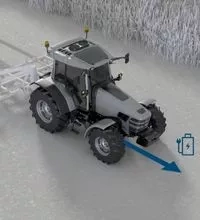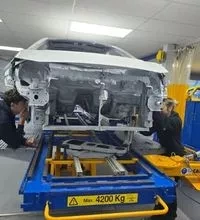Frank Massey: Component knowledge
In this article: In part two of Frank Massey’s series, he discusses the lessons he learned from his days as an aircraft assembler and how it helped him become an exemplary technician
In 1979 and I was an airframe technician on final assembly at BAE’s military aircraft division at Warton, Preston, which involved fitting the swing wings, tailerons and fins.
A background in precision engineering made my move into aircraft assembly relatively comfortable, and the recruitment drive at the time attracted many automotive technicians.
The most noticeable aspects about the working environment there were its cleanliness and attention process, including mandatory post-work inspections. Each completed task went into the aircraft build manual in order to maintain legal obligations.
You worked as a cohesive team. Each task was presented as a package of components, assembly drawings, and a tool inventory. When an assembly required torquing, the wrench had to be pre-set and inspected on a master gauge prior to actual use on the aircraft. As part of the wing bearing assembly we used liquid nitrogen at a rather chilly -185°C to shrink the bearing bush prior to fitting. Positive locking methods included split pins, friction devices, self-shearing nuts, and – my favourite – wire locking.
My days in aircraft assembly gave me new skills in advanced materials technology, carbon fibre composites, structural bonding, and the use of a whole range of fasteners which have only just started to enter the automotive sector now.
The search for satisfaction
However, despite good pay rates and a superb working environment, there was no job satisfaction. As a technician I thrive on responsibility, respect and the opportunity to demonstrate my skill sets. It's my opinion that technicians and engineers have a unique blend of sadly undervalued skills. But the rapid evolution in vehicle technology is of great assistance to this end.
My vehicle diagnostic career began in 1985 when vehicle electronics were in their infancy and engine tuners were seen as specialist tools. Serial communication tools came several years later, and it was a very troubled birth: 2-3 digit codes with primitive description, blink codes, and no data streams.
I didn't realise it at the time, but the basic nature of these tools was the biggest gift of my career development, as I had no one to depend on other than myself and my own initiative. I continuously researched various systems and their components; I had to develop processes, tools, and measurement parameters from scratch.
Decisions I made then carry implications even to this day: my decision to use tools that were already well established in the electronics industry – advanced oscilloscopes, Hall Effect current clamps and others – were pioneering at the time.
This, and the decision to hold the spin-off training programmes that followed, made as many friends as it attracted critics.
Know what you’re working with
The key to diagnostic competence is system and component knowledge, aided by accurate measurement skills. For example, a map sensor with four circuits will also provide temperature information, and cable size helps us to understand the potential load within a circuit.
The biggest challenge with sensor testing is range error as values are rarely represented in published data accurately. Range error may be caused by environmental influences, wiring errors, mechanical malfunction, or simply a monitored value error. Where heat or movement is a function of a component then current evaluation is paramount. It helps to predict mechanical seizure or movement error in actuators. All inductors or coils require adequate peak current with prompt induction.
Such knowledge helps technicians interpret fault symptoms and test data; often technicians experience symptoms not causes, and skill with diagnostic systems help form an accurate evaluation of faults.




